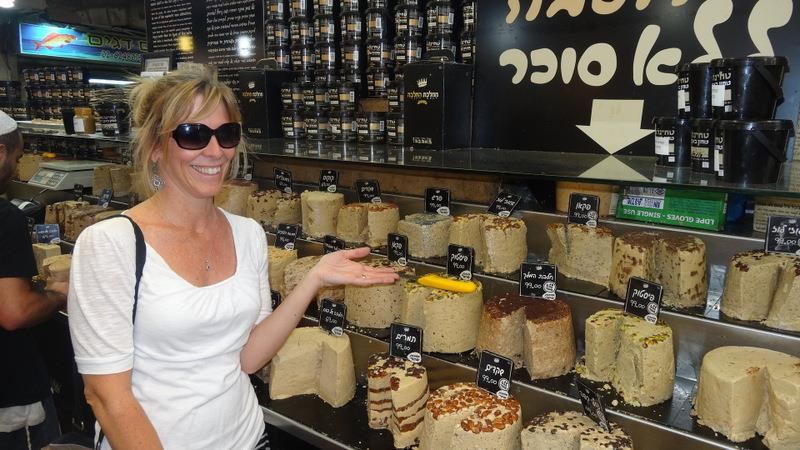Fairytales, Feasts and Fables

Long before Disney princesses, Hans Christian Anderson stories, and the French fairy tales that inspired them, there was a true story of a girl who rose from a lowly and unknown position to a grand palace, a place of influence, and a pedestal of admiration which continues to endure today…
Once upon a time, long, long ago, in a glorious and vast empire far away, there lived a young, beautiful maiden, named Esther, who was destined for royalty, though she knew it not. In fact, she was an orphan from a small clan of people, living with her older cousin, Mordecai, in the capital city of the kingdom.
Every day, she took care of their home, washed the clothes, and helped cook the meals. At night, when she went to bed, her cousin would read her ancient stories about their people, their God, and their distant homeland. Stories that told of how they had suffered through terrible ordeals time and time again, but the God of their fathers kept and preserved them through it all.
As the light from the little oil lamp flickered in the night, Mordecai’s soft tone lulled Esther into a deep sleep where a symphony of voices and vivid images from the past and future mingled together and danced across her mind.
Just a few miles away, in a spectacular castle, lived a lonely young king, who was looking for a new wife. His nobles called for every maiden in the kingdom to be brought to the palace. There, they would receive twelve months of beauty treatments, after which the king would choose the fairest in the land to be his new queen.
As soon as word traveled of the king’s order, many maidens gathered in the city, hoping to be taken to the palace. Esther was buying spices in the marketplace for the evening meal when, suddenly, she also was taken away to the king’s palace. Though she didn’t know it then, Esther’s royal destiny was about to unfold. And soon, she would have to make a choice about whether she really believed the stories her cousin read each night, and whether she could trust the God of her people to come through once again…

Purim is a Jewish holiday recorded in the biblical book of Esther and founded on the historical events that took place in Persia around 480 B.C. Haman, the Agagite and enemy of the Jews, cast lots to choose the day to carry out his evil plan to destroy the Jewish people. However, God was already working his own plan to raise up a young, Jewish orphan girl to a royal position and deliver his people from destruction. With several stunning plot twists, concealed identities, political intrigue and divine providence, the story of Esther unfolds like a modern-day thriller.
When I was growing up, Purim was every kid’s favorite holiday to celebrate, complete with costumes, cookies, games, prizes, and parades.
Every year in early Spring or very late Winter, we would attend synagogue in the evening and the following day to hear the Megillah (scroll of Esther) read in Hebrew. However, this wasn’t a somber, religious-type reading. Starkly different from our weekly Shabbat services with the Torah chanting, liturgy, and special prayers, this was the one time a year when everyone including the Rabbi and Cantor would dress up in costumes (to represent how G-d concealed his involvement in human affairs). My mother would help me dress up in the fanciest dress I had, accessorized with costume jewelry and a tiara, of course, because every little girl wanted to be Queen Esther. My brother, always intent on terrorizing me, reveled in dressing up as Haman so he could continue his annoying antics.
The Megillah was read theatrical style with the entire congregation cheering at the sound of Queen Esther and Mordecai’s name and booing, stomping and shaking their groggers (noisemakers) at the sound of Haman’s wicked name.
In addition to the Megillah reading, there were Purim carnivals with games, contests, prizes, and Purim schpiels, (dramatic presentations of the story, often told through parody). We would exchange Mishloach Manot, baskets (special packages filled with chocolate, cookies, nuts, fruit and Hamantaschen,- the triangular, pocket-filled pastries).
While the Spring and Fall feasts brought a feeling of weight and responsibility, Purim was the one day when the only agenda on tap was to rejoice and give gifts to the poor.
And, while merrymaking is clearly the overarching theme at Purim, there are layers upon layers of spiritual significance to the story and vital lessons we can learn and apply in our own lives.
First, even the day Haman cast his lots is significant because it was the 13th of Nisan, the day before Passover. The Jews of Persia would have been busy preparing their homes to commemorate their deliverance from slavery in Egypt when Haman’s plot and the King’s edict was issued to annihilate them. The panic the people felt would have painfully reminded them of the panic their forefathers felt when the threat of Pharoah’s chariots were behind them and the seemingly unsurpassable sea stretched out in front.

this time, the Jewish people were dispersed throughout an expansive empire with no great deliverer in sight. And they were about to celebrate the most important festival of freedom when another enemy emerged intent on destroying them.
If you’re a follower of Jesus, you know what it’s like to have a dark, satanic force intent on destroying your family, your faith, your peace, and your joy! And, those attacks always seem to come at pivotal times, like special occasions, family gatherings or holidays. In the story of Purim, it was both a spiritual and physical threat the Jewish people were under, not unlike the threats repeated against them several times throughout history.
And the reason for this wicked power of hate that continues to reassert itself? The same as always…simply because they were Jewish.
Over the next six weeks, we’re going to dive into several topics surrounding Purim including:
The historical events that led up to Purim (How did Haman’s ancestors, the Amalekites, become enemies of the Jews and why were they still stirring up trouble against them?
Chutzpah, Humility and Honor- how they work together.
Antisemitism-why is it still alive today and why, like Haman, it has to be eradicated from the kingdom or body of Messiah.
Modern-day Persia (Iran)- Understanding how the story of Purim can positively impact the land and people there today.
Recipes to celebrate Purim- Mouthwatering Hamantaschen, and DIY Mischloach Manot baskets (which comes from the tradition in the book of Esther to send portions to friends and those in need).
For now, I thought we’d start getting into the Purim mood by honoring the heroine of the story, Esther, with a delicious middle eastern treat called Halva.
Halva looks a little like fudge but is different in texture. It’s made from Tahini and sugar and comes in multiple flavors like coffee, chocolate, pistachio, vanilla, etc. When I was growing up, my dad and I would purchase the chocolate covered version from the local kosher market and wash it down with a cold glass of milk. It wasn’t until I went to Israel in 2015 that I tasted the many varieties of Halva and was blown away by the flavors.
Here’s a pic of me in front of the varieties of fresh Halva in the market..


This is a pic of a bakery owner…I think his name was Gidon…he wasn’t selling any Halva, but isn’t he cute?
Halva is the perfect vegan treat to indulge in every now and then when your sweet tooth is calling. Esther is said to have maintained a vegetarian diet at the palace to observe the kosher laws. Here’s an easy recipe I found and adapted to make it my own. I made the marble version, with vanilla and chocolate but you can add nuts like pistachios to liven it up even more. I used a silicone mold pan with snowflake star shapes because Esther’s name means “Star” but if you want to use a regular 8 by 8 pan, you will need to double the recipe.

Yields: 10 servings Time: 3 hours 30 minutes,
Prep time: 5 minutes
3/4 C.Tahini
3/4 C. sugar
1/4 tsp. kosher salt
1/2 tsp. vanilla extract
2 Tbs. plus 2 tsp.
oz. chopped chocolate
- Place tahini and salt in a large bowl.
- In a medium pot over medium heat, combine sugar, water and vanilla and give it a quick stir. Bring it to 245 degrees. Check heat with a candy thermometer.
- Once mixture is heated to 245 degrees, carefully pour syrup into tahini mixture.
- Stir until combined and mixture thickens. Do not overmix or the Halva will be crumbly.
- Drop mixture into silicone mold by the spoonful and smooth the top.
- Let cool to room temperature and refrigerate for three hours.
Let me know if you try it and how you like it!
Stay tuned as we delve into the principles of humility, chutzpah and honor and how they can work together in your life for blessing whether you’re an introvert or an extrovert.

